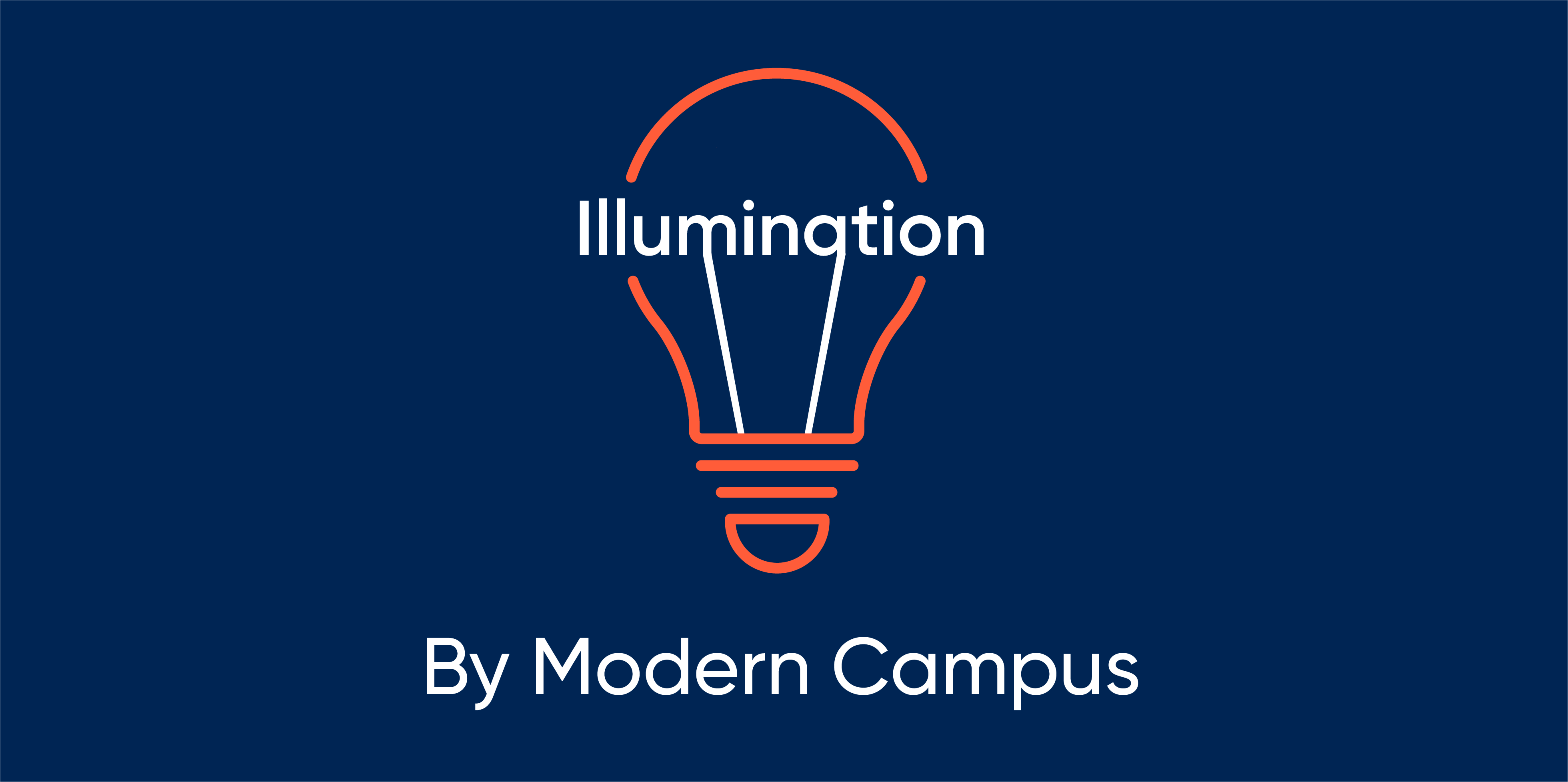Collaborating Across the Institution to Meet Modern Learner Demands

In wake of the pandemic, higher education knows it needs to change. The workforce is evolving at a rapid pace. Employers are struggling to fill the skills gaps and employees’ skills are quickly becoming outdated for them to move forward in their careers or even find something available.
Industry is quickly realizing that people need to re-enter the higher education system and upskill or reskill to remain relevant. These modern learners need an education journey that’s adaptable, flexible and accessible.
This means the traditional structure of most colleges and universities needs an upgrade.
In the fourth episode of Illumination by Modern Campus, Tanya Zlateva, Dean of the Metropolitan College at Boston University, highlighted higher education’s reputation when it comes to adapting.
“Over the last 10 years, higher ed has been critiqued harshly for its high costs, elitists, curricular disconnect from professional needs, and unfriendly delivery models for adult learners,” she said.
Traditional universities, such as research universities, have been using the same systems and processes for decades. This means they’re typically outdated and require more time from staff to complete everyday tasks.
This poses a greater challenge for learners looking to complete short-term courses and earn credentials at a time most convenient for their career journey.
But changing an infrastructure quickly and efficiently is difficult.
“Finding a new sustainable model for educating a rapidly and continually changing workforce is higher education’s biggest problem,” Zlateva said.
The workforce evolves at a pace higher ed isn’t used to keeping up with. Most systems currently in place at traditional institutions aren’t able to keep up.
“They’re not flexible, nor responsive to industry or relevant education,” she said.
This isn’t new. As Zlateva points out, industrial revolutions bring about the change when it comes to new jobs, while distorting existing occupations. But this revolution differs slightly. The pace is much faster than usual, creating new knowledge that requires employees to continually go back to school.
Institutions have the knowledge and expertise at their fingertips to become adaptive to this rapidly evolving demand. Their Professional and Continuing Education (PCE) division.
PCE divisions have been at the forefront of serving adult learners for decades and have the ability to show the rest of the institution how to deliver on this new form of education.
But there’s a growing disconnect between the traditional side and PCE divisions. PCE requires delivery options of all types--online, hybrid, non-credit--things that have become an afterthought for the traditional side.
“We shouldn’t fault the universities for that because they have a research mission. PCE is at odds with the basic research mission of the university. So, we need a new approach,” Zlateva said.
A new approach is what some traditional faculty are trying to execute on their own. But not having that expertise on hand, poses some challenges when building professional and online learning offerings.
“While traditional faculty prioritize the creation of new knowledge, the continuing education unit is looking at how to deliver the knowledge and skills needed right now,” she said.
PCE divisions are constantly updating training and programming materials to adapt to the evolving workforce and learner demands. This positions them to be the perfect partner for the main campus.
As Zlateva points out, a strong relationship requires, “A cohesive and thoughtful change in the culture of the institution that values the expertise of continuing education faculty.”
This collaboration is a win-win for everyone.
Through this partnership, institutions, at large, are better prepared to deliver the non-traditional experience students are looking for. They’ll have the knowledge and expertise to deliver programming that is aligned with workforce needs while better preparing students through their lifelong learning journey.
“This is the central need of the 21st century,” Zlateva said, “If institutions want to survive, if they want to be useful, they have to be able to deliver that education.”
Full Episode
Last updated: July 29, 2021


